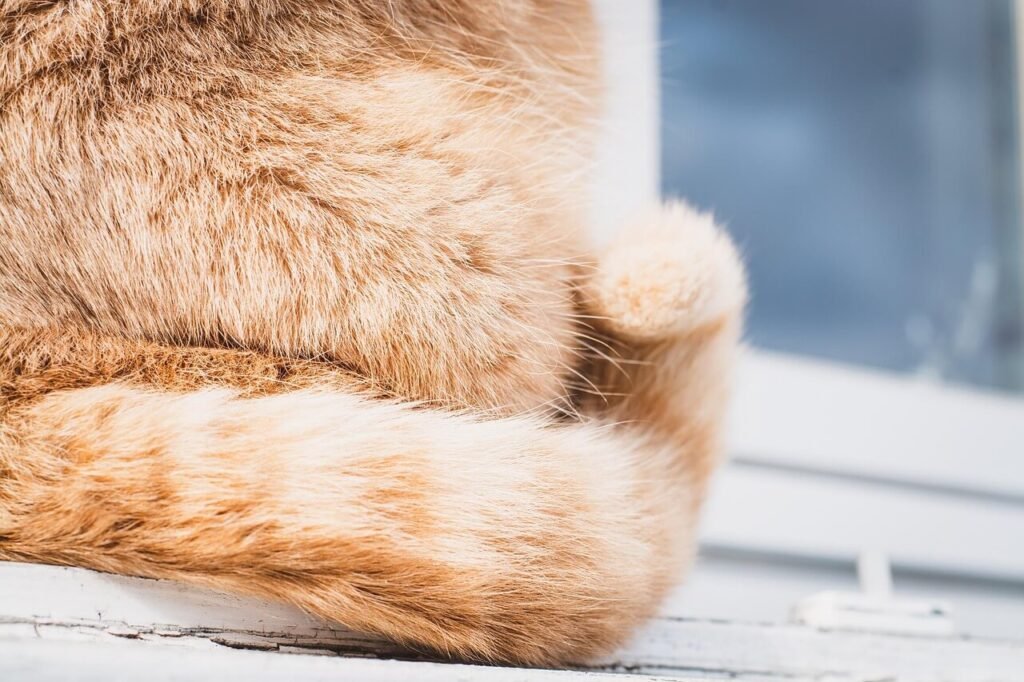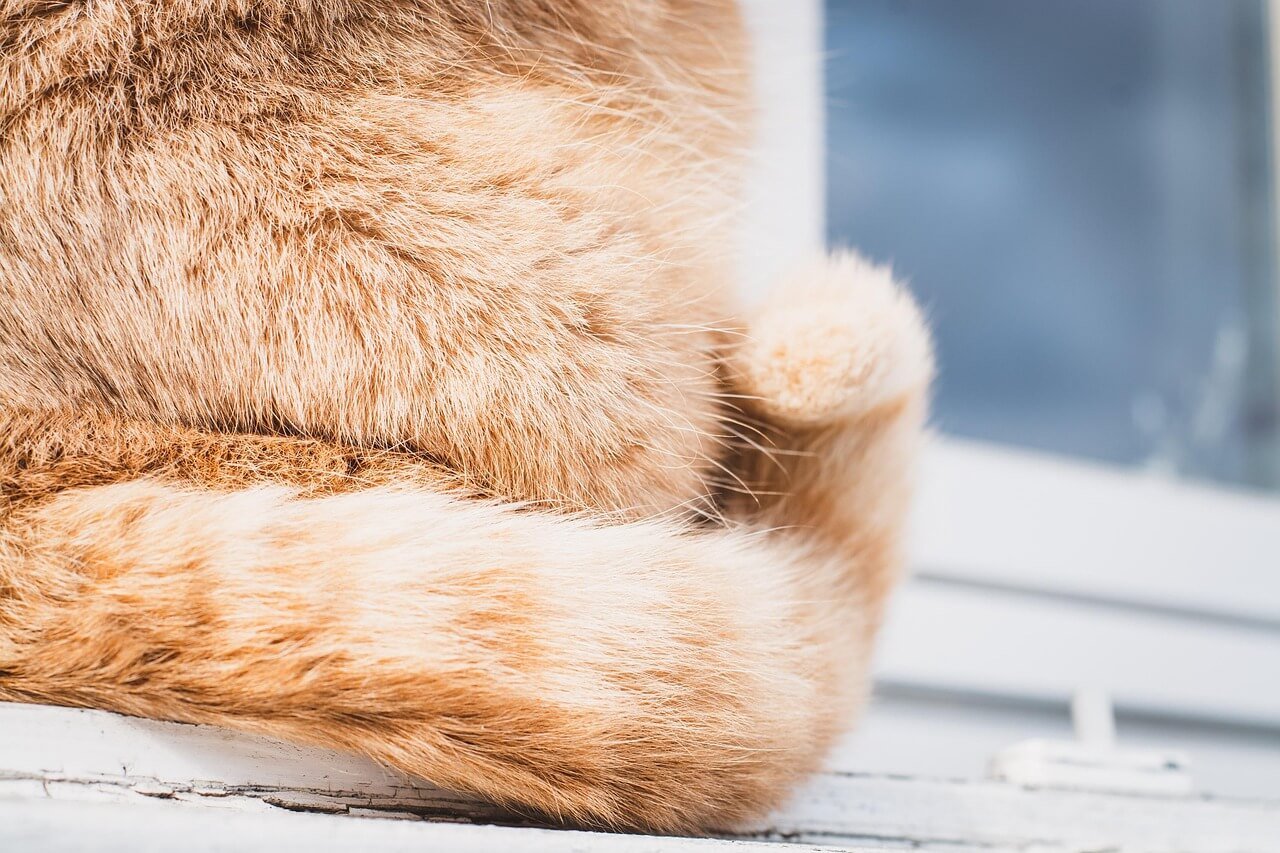The Question Mark Tail Cat: A Quirky and Adorable Trait
Have you ever noticed a cat whose tail curls into the shape of a question mark? This unique and charming posture is not only adorable but also carries meaning about the cat’s mood and personality. Often associated with curiosity, playfulness, or affection, the question mark tail is a delightful quirk that many cat lovers adore. Whether you’re a seasoned cat owner or simply fascinated by feline behavior, understanding why cats adopt this distinctive pose can deepen your appreciation for these incredible creatures. In this article, we’ll explore everything you need to know about the question mark tail cat, from its significance to how it reflects your cat’s emotions and health.
Decoding the Question Mark Tail: What Your Cat Is Trying to Say
A cat’s tail is a powerful tool for communication, and the question mark tail is one of the most expressive postures they can display. This upward-curving tail shape often signals positive emotions, but it can also provide insights into your cat’s state of mind. Here’s what a question mark tail might mean:
Friendly and Approachable :
A question mark tail often indicates that your cat is feeling social and open to interaction.Playful and Energetic :
Cats with a question mark tail may be inviting you—or another pet—to engage in play.Curious and Alert :
The upright curve suggests your cat is paying attention to something interesting nearby.Affectionate and Content :
When combined with purring or rubbing, it shows your cat feels safe and loved.Confident and Relaxed :
A confident cat will hold their tail high, sometimes curling it slightly at the tip.
The question mark tail is a universal sign of positivity in cats, making it one of the most heartwarming gestures they can make. Pay attention to this posture—it’s your cat’s way of saying, “I’m happy and ready to connect!”
Certain Breeds Love to Show Off Their Curly Tails
While any cat can display a question mark tail, certain breeds are more likely to exhibit this endearing trait due to their natural body structure and temperament. If you’re curious about which breeds are known for their curly tails, here’s a list to guide you:
Maine Coon :
This gentle giant is famous for its bushy tail, which often curves into a question mark shape when relaxed.American Shorthair :
Known for their playful nature, these cats frequently sport a question mark tail during active moments.Siamese :
With their expressive personalities, Siamese cats use their tails—including the question mark pose—to communicate.Japanese Bobtail :
While their tails are naturally shorter, they often curl upwards, resembling a question mark.Scottish Fold :
These sweet-natured cats often have flexible tails that curl into charming shapes.
These breeds not only showcase the question mark tail but also embody the friendly and curious traits associated with it. If you’re considering adopting a cat, keep an eye out for these delightful companions!
Check this guide 👉Decoding the Mystery of Cat Tail Wagging: Best 7 Tips!
Check this guide 👉Understanding Why Cats Swish Their Tails: Best 7 Expert Tips
Check this guide 👉Cat Losing Hair at Base of Tail: Best 7 Expert Tips!

Common Emotions Behind the Question Mark Tail | Breeds Likely to Display It |
|---|---|
Friendly and approachable | Maine Coon |
Playful and energetic | American Shorthair |
Curious and alert | Siamese |
Affectionate and content | Japanese Bobtail |
Confident and relaxed | Scottish Fold |
Strengthening the Bond Through the Question Mark Tail
If your cat frequently displays a question mark tail, it’s a great opportunity to reinforce positive behavior and strengthen your bond. By responding appropriately to this gesture, you can ensure your cat feels understood and appreciated. Here’s how to encourage and celebrate this adorable trait:
Engage in Playtime :
When you see the question mark tail, grab a toy and initiate a fun play session.Offer Gentle Affection :
Stroke your cat gently or give them a treat to reward their friendly demeanor.Provide Mental Stimulation :
Introduce interactive toys or puzzles to satisfy their curiosity and energy.Create a Safe Environment :
Ensure your home is free of stressors so your cat feels comfortable expressing themselves.Observe Their Preferences :
Take note of situations where your cat shows a question mark tail to better understand their likes.
By fostering a supportive environment, you’ll encourage your cat to continue displaying this joyful posture. Celebrate their quirks—they’re part of what makes your feline friend so special!
Understanding Tail Movements as Indicators of Health
While the question mark tail is typically a sign of happiness, changes in tail posture can sometimes signal underlying health issues. Monitoring your cat’s tail movements can help you identify potential problems early on. Here’s what to watch for:
Limp or Drooping Tail :
Could indicate injury, nerve damage, or pain in the tail or lower back.Puffed-Up Tail :
Often a sign of fear or aggression rather than curiosity or playfulness.Excessive Tail Flicking :
May suggest irritation, discomfort, or even gastrointestinal issues.Tail Held Low or Tucked Under :
Can reflect anxiety, submission, or physical discomfort.Inability to Lift Tail :
May point to spinal problems or muscle weakness requiring veterinary attention.
While the question mark tail is usually a good sign, being aware of abnormal tail behaviors ensures your cat stays healthy and happy. Consult your vet if you notice any concerning changes.
The Language of Tails: More Than Just a Curl
While the question mark tail is a delightful and positive sign, cats use their tails in countless ways to communicate. Each movement or position conveys specific emotions or intentions, offering valuable insights into your cat’s state of mind. Here are some additional tail postures and what they might mean:
Straight-Up Tail :
Indicates confidence and happiness, often seen when greeting you or another pet.Low-Hanging Tail :
Suggests caution, fear, or submission, signaling that your cat may feel threatened.Swishing Tail :
A slow swish can indicate focus, while rapid flicking often means irritation or annoyance.Puffed-Up Tail :
Shows fear or aggression, as your cat tries to appear larger to ward off threats.Wrapped Tail Around You or Another Cat :
A gesture of affection and trust, symbolizing closeness and bonding.
By observing these tail cues, you can better interpret your cat’s feelings and respond appropriately. Every wag, curl, or flick tells a story—listen closely, and you’ll learn so much more about your feline friend.
Quirky and Unique: Why Curly Tails Are Special
Cats with curly tails, including those who frequently sport the question mark shape, have a certain charm that sets them apart. These tails aren’t just adorable—they’re also tied to fascinating facts and traits. Here’s why curly-tailed cats are truly one of a kind:
Genetic Influence :
Some curly tails are the result of specific genetic traits, particularly in breeds like the Japanese Bobtail.Historical Significance :
In ancient folklore, curly-tailed cats were often seen as bringers of good luck or protectors of households.Enhanced Agility :
The flexibility of a curly tail can aid balance during jumps or quick movements.Personality Correlation :
Cats with curly tails are often described as more playful, curious, and sociable than others.Distinctive Markings :
Many curly-tailed cats have unique coat patterns that complement their quirky tails, adding to their allure.
Curly tails are not just a physical trait—they’re a reflection of a cat’s personality and history. Celebrate this uniqueness and cherish the joy these cats bring to your life.
Preserving Memories: How to Photograph Your Cat’s Quirky Pose
The question mark tail is too cute not to capture on camera! Whether you’re sharing photos with friends or simply creating lasting memories, here are some tips to help you snap the perfect shot of your cat’s adorable posture:
Use Natural Light :
Position your cat near a window or outdoors to highlight their tail and fur in soft, natural lighting.Be Patient and Observant :
Wait for moments when your cat is relaxed or playful, as this is when the question mark tail is most likely to appear.Get Down to Their Level :
Shoot from your cat’s eye level to create a more intimate and engaging photo.Incorporate Toys or Treats :
Use toys or treats to encourage your cat to lift their tail into the desired position.Edit for Clarity :
Enhance your photo slightly by adjusting brightness or contrast to make the tail’s shape stand out.
With a little patience and creativity, you can capture your cat’s question mark tail in all its glory. These photos will serve as cherished reminders of your cat’s unique personality and charm.
Frequently Asked Questions About the Question Mark Tail Cat
Why does my cat’s tail curl like a question mark?
It’s a sign of friendliness, curiosity, or playfulness—your cat is likely feeling happy and sociable.
Do all cats show a question mark tail?
Not all cats do, but many will display it when they’re in a good mood or seeking attention.
Can a question mark tail mean my cat is sick?
Generally, no—a question mark tail is a positive sign. However, other unusual tail movements could indicate health concerns.
Are certain breeds more likely to have a question mark tail?
Yes, breeds like Maine Coons, Siamese, and Japanese Bobtails are known for this trait.
Should I respond when my cat shows a question mark tail?
Absolutely! Engaging with your cat during this moment strengthens your bond and reinforces positive behavior.
Final Thoughts: Celebrating the Charm of the Question Mark Tail
The question mark tail is more than just a cute pose—it’s a window into your cat’s emotions and personality. Whether it’s a sign of curiosity, playfulness, or affection, this endearing gesture reminds us of the joy cats bring into our lives. By understanding what your cat’s tail is telling you, you can deepen your connection and ensure they feel loved and supported. So the next time you spot that adorable question mark tail, take a moment to appreciate the magic of your feline companion. After all, their unique quirks are what make them truly unforgettable!
Canned Pumpkin for Cat Diarrhea: Best 7 Expert Tips! Natural remedy to firm stools, soothe upset bellies, and support gut health safely.
Can a Cat Give You Scabies? Best 7 Expert Tips! Discover the truth about feline mites, human skin risks, and how to protect yourself—without panic.
Cat Flea vs Human Flea: Best 7 Expert Tips! Discover the truth about bites, species, and how to eliminate infestations for good.
Weird Cat Behaviors: Best 7 Expert Tips! Discover why cats do strange things—and how to understand, not punish, their instincts for a happier home.





